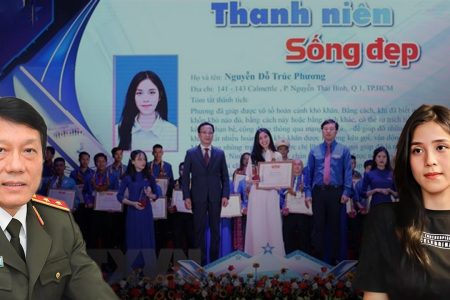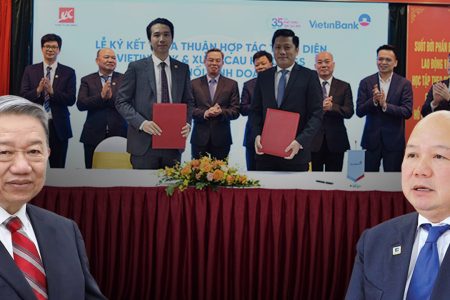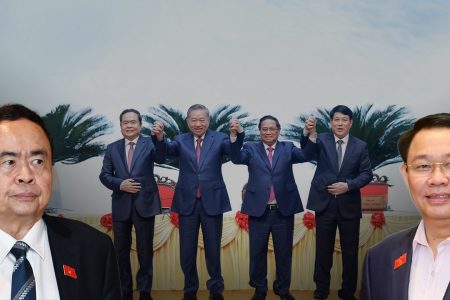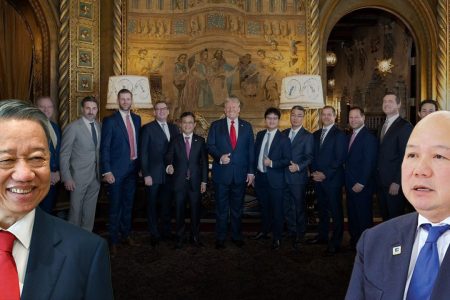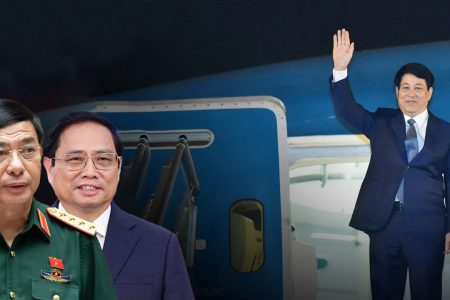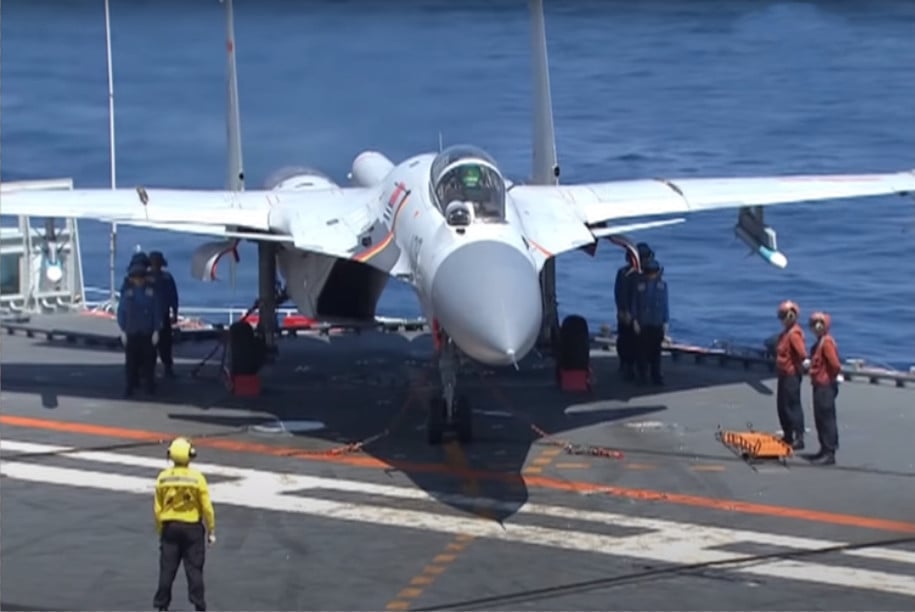
On August 6, Vietnam officially commented on the recent Chinese exercise video, including the deployment of fighters to Subi Rock in the Truong Sa (Spratlys), which Vietnam declared as its sovereignty.
„First, it can be affirmed that the Hoang Sa (Paracels) and the Truong Sa (Spratlys) are an inseparable part of Vietnam. All activities in these two archipelagoes without the permission of Vietnam are violating Vietnam’s sovereignty, worthless and not conducive to peace and stability in the East Sea (South China Sea),“ Vietnamese Foreign Ministry’s Spokeswoman Le Thi Thu Hang said at the regular press conference on the afternoon of Aug 6.
„Vietnam resolutely protests,“ said Ms Hang.
On this occasion, three regional news and security observers in the South China Sea gave comments and analysis to the BBC.
Researcher Dinh Kim Phuc from Saigon: In my opinion, there cannot be any war in the near future between the US and China. China is in a weak position when the US and its allies are increasingly surrounding, so the Chinese actions, in my opinion, are to find allies and deter Southeast Asian countries before the Expanded ASEAN Defense Ministerial conference in August 2020.
Researcher Hoang Viet (Ho Chi Minh City University of Law): This move of China came after the voices of related countries such as the Philippines, Vietnam, Indonesia, Malaysia, Australia and Vietnam, especially the strong voice of the US and its accompanying actions, to protestChina’s misconduct in the South China Sea.
The US side also recently reiterated its opposition to China forcibly threatening the exploitation of resources in the exclusive economic zone of ASEAN countries, so we can understand this is a „Chinese show of force“ in response to and threaten the actions of the US and related countries in the South China Sea.
On the other hand, information from China indicates that the upcoming Beidaihe Conference is also putting pressure on Xi Jinping, and with Chinese actions seen as asserting strength and claiming to be in control of Xi’s fraction which aimed at suppressing the protests of internal political groups within China.
Are there implied threats?
Dr. Ha Hoang Hop (senior researcher from Singapore’s Singapore Institute of Iseas): This military exercise is an aerial oil refueling exercise, above the sea, and a long flight at sea (during the day) ) at a low speed, carrying missiles and reconnaissance equipment for that Su-30MKK aircraft. The Su-30MKK does not carry an extra oil tank, instead, the hangers can carry a maximum of missiles, bombs and reconnaissance equipment (reconnaissance pod). Flying continuously for 10 hours at sea, Chinese pilots also learn to eat, drink … as we see in the short video. Russian Su-30MKK manufactured for China does not emphasize the type of flying at sea; Chinese air force tries to fly the sea – by day, a training attempt.
Strategically, flying many hours continuously in the air, is meant to threaten Vietnam, Indonesia, Philippines, Australia – with such hours, increasing the speed to 1.4 to 1.5 times, the aircraft can fly to the Tasmania island! Looking closely, it probably won’t scare anyone, because if an air battle occurred in the Spratlys, combined with offensive missions (bombing), then the fighting time could not be longer than 60 – 70 minute. If flying into Australian or Indonesian airspace, it is necessary to take into account the strong air defense systems of Australia, and the defense capability is quite good with Indonesian aircraft and air defense. For Vietnam, the country has only 21 guard posts, mostly rigs in Spratlys.
Attacking with Su-30 or any other aircraft (including bombers) seems to be impractical, because it is expensive and probably not as effective as attacking with warships and submarines. From drills and threats, to actual attacks, there is a gap, depending on many factors and conditions.
It is difficult to say what this type of exercise implies for the upcoming RIMPAC exercise. The scale of the RIMPAC is quite large, multi-objective, different from this small Chinese exercise. For two years now, the US has not invited China to join RIMPAC, so maybe China is doing its own exercise now.
New record and real power?
BBC: Su30 Chinese fighter jets make a continuous flight of 10 hours, originating from the mainland, fueled in the air while flying to the Spratlys area reported by Chinese media as “new record,” this distance seems to be able to realize the potential along the entire length of Vietnam, if the information on the “new record” is true, then what Vietnam needs to calculate and prepare for itself?
Mr. Dinh Kim Phuc: In my opinion, Vietnam was not surprised and passive. The Vietnam Air Force and Navy, with their existing weapons, can cope with China given the fact that China’s force must start operations from thousands of kilometers.
Mr. Hoang Viet: Previously, one of the disadvantages of China in attacking Spratly was that the route was too long, Chinese fighters could not provide supplies to return. However, with this action, China wants to show that this disadvantage China has sought to overcome.
With this event, plus 7 artificial islands in the Spratlys have been militarized by China, forming strong military bases like China’s „sea fleets,“ in addition to the threat of military action such as attacking the Spratly entities controlled by other countries including Vietnam.
With this in mind, Vietnam needs to take into account defensive measures as the Chinese army simultaneously attacks the Spratlys from multiple directions.
Mr. Ha Hoang Hop: Chinese media called it a good record – that is the record of Chinese air force with SU-30MKK.
Normal flight, no need to refuel in the air, only 70-80 minutes is to fly the entire length of Vietnam, if there is a battle, it takes about 50 minutes, then back to Naning military airport, so it does not go away 5 hours. Flying 10 hours, with aerial refueling, is quite spectacular.
However, Vietnam may not have to think about it – the Su-30MK2 aircraft that it bought from Russia, probably flying at sea both day and night, are okay, to defend and protect the island with Su- 30 … then the air force of Vietnam does not need to fly as far as a Chinese plane. Defending other targets, the Vietnamese air defense has no problems.
BBC: From what you know, how is China’s military and military strength in the South China Sea, of concern, or of concern, to international and regional observers?
Mr. Dinh Kim Phuc: According to the data of China and the West, China’s weapons and ammunition on the illegally occupied islands in Truong Sa are worrying, but important are deterrents or distractions, act of partial war with one or more countries.
In my opinion, if China wants to start a war in the South China Sea, its target will be Vietnam. If the Sino-Vietnamese local war takes place in the South China Sea within a month, China will have one more lesson after 1979.
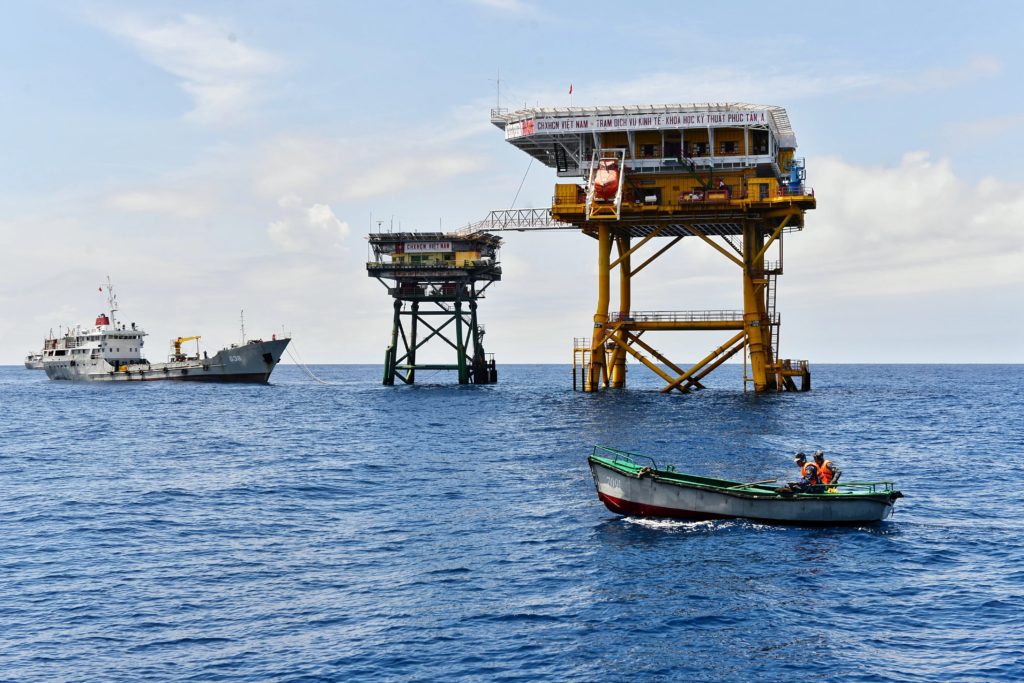
Mr. Hoang Viet: The strength of China’s military strength is not yet comparable with the US, however, compared with the ASEAN countries concerned, individual ASEAN countries cannot be a counterweight to China.
That is a fact. However, war will have many aspects of it, a country will not win with only many weapons and troops.
Indeed many wars in history have proved this problem. However, war is something no one wants to happen, so the parties need to try to maintain peace. Therefore, if only the abuse of power and influence by threats and coercion, it is difficult to survive long, which is the inevitable trend in the world.
Mr. Ha Hoang Hop: China’s military capacity in relation to the sea (including navy, air force, submarines …) has been evaluated positively by strategic, security and defense research agencies, especially is defensive power. China is not yet a global naval power.
Although China has a large number of warships, submarines, naval missiles, navy air … but the quality and modern technology in those strains is not very modern. The Chinese military is much bigger than the Vietnamese army, and has many stronger points (in terms of quantity, equipment, weapons …).
However, Vietnam’s Ministry of Defense still asserts that Vietnam was always proactive, not to be surprised, and Vietnam always strengthens its defense and defense capabilities. The Vietnamese military believes that if it is invaded or attacked, it will try everything it can to repel the invaders.
American-Asean motion
BBC: The US recently had Ministerial-level diplomatic phones with Singapore and Indonesia, including discussions on security and military cooperation in the waters between Washington and Jakarta, while the Philippines stated unilaterally stopping participating in military exercises, drills, military exercises in the South China Sea, can you explain these moves?
Mr. Dinh Kim Phuc: Filipino President Rodrigo Duterte does not believe in the ability of the US to protect the interests of the Philippines. But the immediate reason for the move is likely due to China’s promise of a Covid 19 vaccine for the Philippines.
Mr. Hoang Viet: ASEAN countries in recent years, on the one hand, these countries have been heavily dependent on China, on the other hand, when the US neglected the South China Sea area, made China use power to threaten and force many ASEAN countries to remain silent in the South China Sea issue.
However, with the recent push and encouragement of the US, the voices of the concerned ASEAN nations have become much stronger. President Duterte is in a „dilemma“ when his term is nearing the end, so he tries to find ways to „take advantage“ of Chinese investment and aid when Mr. Duterte recently claims not enough money to rescue Filipinos in the COVID epidemic 19.
His statements are constantly changing, so it is not possible to just look at his statements that assess the problem.
In a recent note to the UN, just as the Philippine Foreign Minister said, the 2016 ruling is not negotiable. So, let’s just wait and a few more days, Mr. Duterte will change his mind. The nation’s „reviving“ ruling 2016, requiring China to abide by it as well as the countries that openly oppose China’s wrongful claim is the best evidence for „the wind has reversed unfavorably” for China.
Mr. Ha Hoang Hop: US Secretary of State Pompeo and Indonesian Foreign Minister Ms. Marsudi agreed to expand bilateral defense and security cooperation on existing platforms (Indonesia currently uses US F-16 aircraft and many American equipments, weapons in the air force, air defense and navy).
We wait for the talks and contacts between the two defense ministers to come, we will know more about the progress of US-Indonesia security and defense cooperation. Indonesia has many excellent naval and air bases.
Singapore has good relations with both the US and China, with Singapore primarily using US weapons, the US has signed a 15-year extension of the use of Singapore’s naval and air facilities. Singapore is continuously trying to contribute to regional peace, helping Asean-US and Asean-China relations develop on the peace and compliance with international law.
The Philippines‘ biggest advantage is the 2016 arbitral tribunal ruling for the Philippines. The second biggest advantage, the Philippines is an US ally under the 1951 agreement.
President Duterte decided not to allow the Philippine navy to participate in the next exercise, in fact because the Philippine navy is still small and weak, on the other hand, not participating in the exercise with the US and other countries could be a sign to make Beijing comfortable in the short term. Also, perhaps there is no major meaning in terms of strategy.
And Vietnam’s policy
BBC: And finally, according to you, Vietnam, as the ASEAN chair in this term, can identify these movements and what policies and strategies are needed in this context to serve constructive and positive contributions to security, peace, stability and development in the region while ensuring the legitimate rights, interests and interests in the South China Sea and the region?
Mr. Ha Hoang Hop: Vietnam is preparing to promote Code of Conducts (COC) negotiations between ASEAN and China, other conferences (ADMM / ADMM +) will also be conducted online. Vietnam hopes that the ASEAN Summit Meeting in November will have all conditions for a normal meeting, including leaders of ASEAN countries and heads of state of China, Russia and the US, Japan, Korea, etc will attend.
Along with the role of a non-permanent member of the UN Security Council, Vietnam is actively playing an important role in the rotating ASEAN chair position, maintaining peace and stability in the region, promoting development in the region. The context of the COVID-19 pandemic, and at the same time efforts to ensure the national interests of Vietnam.
Vietnam welcomes all countries‘ contributions to the South China Sea issue in accordance with international law, including those from ASEAN countries and ASEAN countries that have disputes in the South China Sea (Malaysia, Philippines, Brunei. ), and Indonesia, the US, Japan, and Australia.
Mr. Dinh Kim Phuc: Compliance with international law, especially the UN Convention on the Law of the Sea 1982 is a priority in current strategies of Vietnam and ASEAN.
The recent „diplomatic note“ shows that Vietnam and ASEAN countries use the claim to expand the exclusive economic zone to 350 nautical miles and the mechanism of action of the UN Continental Shelf Commission for Continental Shelf to kill China’s hegemony in the South China Sea.
Mr. Hoang Viet: ASEAN in general, and Vietnam as ASEAN President this year need to clearly show their roles and bravery in the current stressful and complex situation, need for independent voices and actions, not fall under US-China tensions to avoid complicating the situation. Accordingly, ASEAN needs to show its role in the negotiation and dialogue on the COC in the near future.
Thoibao.de (Translated)








